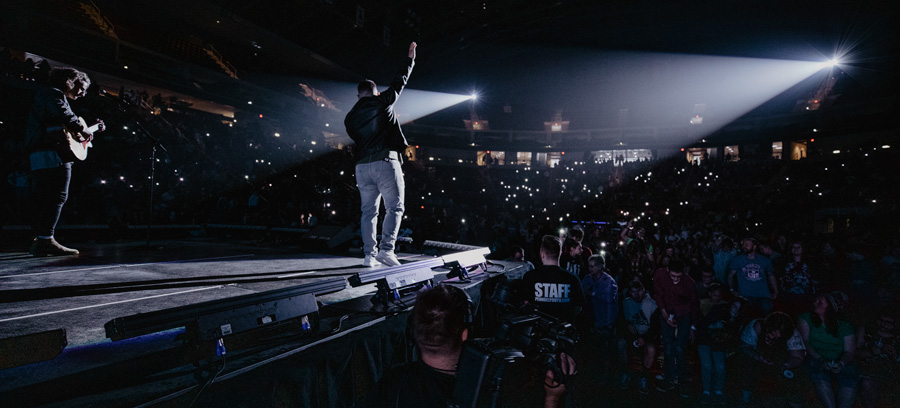Crafting a Memorable Youth Conference: 9 Planning Tips for an Engaging Experience
Organizing a youth conference begins by recognizing that this group is uniquely diverse, with interests spanning from technology and arts to activism and entrepreneurship. Before any concrete planning, engaging potential attendees becomes vital.
Through mechanisms such as surveys or interactive webinars, event organizers can tap into the zeitgeist, allowing them to tailor the event that aligns closely with the expectations and aspirations of the young participants.
1. Choosing the Right Theme:
The heart of any conference is its theme. For the youth, it's essential to gravitate towards subjects deeply connected to the world's pulse, whether addressing global issues like climate change or focusing on personal subjects like mental health.
Beyond just being relevant, the chosen theme should be an inclusive umbrella, capturing diverse backgrounds, cultures, and viewpoints, ensuring every participant feels seen and heard.
2. Engaging Speakers and Workshops:
A notable factor in a conference's success is its roster of speakers. For a youth event, spotlighting young achievers or influencers from various fields can be particularly impactful. Their stories, laden with contemporary challenges and achievements, often strike a chord.
However, youth conferences should not just be about listening. The inclusion of hands-on workshops allows participants to engage, challenge, and generate tangible outcomes, adding layers of value to their experience.
3. Foster Networking and Interaction:
One of the most enriching aspects of a conference is the networking opportunities it presents. Integrating interactive formats like Q&A sessions, panel debates, and breakout rooms can foster deeper connections and collaborations among attendees. But interaction in today's age goes beyond physical bounds.
With advancements in technology, digital elements such as real-time polls, Q&A sessions, or even virtual participation opportunities can elevate the overall experience, making it inclusive for even those who can't be physically present.
|
Build Custom Ticket Options VIP, group ticketing, student or member |
4. Incorporate Technology:
In an era steered by technology, its integration into the conference fabric is non-negotiable. Offering digital tools, whether for real-time interactions during talks or providing avenues for virtual participation, doesn't just enhance the event's accessibility.
It showcases the organizers' commitment to evolving and adapting to contemporary needs. Ways to incorporate tech into your conference could include:
- VR or augmented reality
- Interactive games
- Interactive surveys
- Charging stations or phone areas
- Social media handles
- SMS marketing support
- An event app
- Live streaming or hybrid options
5. Focus on Entertainment:
Beyond knowledge dissemination, a youth conference should cater to the vibrant energies of its attendees. Integrating elements like live music, performances, or interactive zones can intersperse serious sessions with moments of relaxation and enjoyment.
Such additions not only keep attendees invigorated but also make the conference a more holistic experience.
6. Ensure Well-being and Safety:
A conference's success is also gauged by how safe and comfortable attendees feel. Incorporating short mindfulness sessions or physical exercise breaks can ensure mental and physical rejuvenation. Simultaneously, having robust safety protocols signals the organizers' commitment to the well-being of every participant.
Other ways to ensure event safety could include:
- Having a medical team or staff on site
- First aid support
- Clear signages on restrooms, exits, support booths, etc.
- Accessibility support and seating
- Private rooms for breaks
- Free water stations
7. Encourage Continued Engagement:
The end of the conference shouldn't signify the end of the engagement. Establishing post-conference platforms, such as dedicated social media groups or forums, can keep the momentum going. This sustained engagement, coupled with feedback mechanisms, ensures the event has a lasting impact, setting the stage for even more successful future editions.
8. Marketing and Promotion:
The visibility of any event hinges on its promotion.
Embracing platforms popular among the youth, like Instagram or TikTok, can exponentially increase the event's reach. Furthermore, partnerships with educational institutions can offer a gateway to larger audiences, ensuring optimal participation.
9. Sustainable Practices:
In today's climate-conscious world, sustainability isn't a luxury; it's a necessity. Integrating eco-friendly practices, from ticketing to event operations, reflects a commitment to responsible organizing. Such measures resonate deeply with the youth, marrying their experience with the assurance of ethical practices. Click here for more ideas on how to run a sustainable event.
In conclusion, a youth conference is more than a logistical challenge. It's an opportunity to sculpt an experience that empowers, nurtures, and leaves an indelible mark on the leaders of tomorrow.







